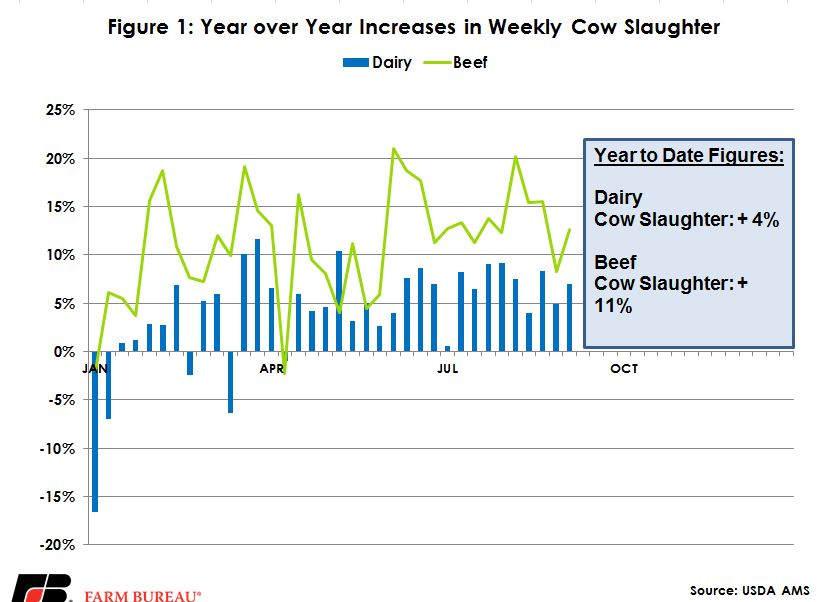By Katelyn McCullock, Economist, American Farm Bureau Federation
Cow slaughter figures have been running higher this year, showing year-over-year gains all but three weeks of 2017. Year-to-date, the number of total cows moving through the system is about 7 percent higher. Weekly slaughter rates were averaging 5 percent above a year ago through April, and 8 percent above a year ago April to July. Since then, slaughter rates have expanded to 10 percent above a year ago.
Both the beef and dairy herds are sending cows to slaughter at a higher rate than in 2016, and rates across both herds have increased in the later part of the year. Dairy cow slaughter year-to-date is 4 percent higher than 2016 and in recent weeks has averaged 7 percent higher compared to the 1 percent higher seen in the first third of the year. The beef herd, on the other hand, has seen some heavier culling this year. Beef cow slaughter is 11 percent higher through mid-September of this year. Weekly slaughter rates have increased by double-digits nearly every week since mid-June. During that timeframe, beef cow slaughter averaged about 14 percent higher than a year ago. Figure 1 shows the weekly year-over- year increases in 2017.

The increase in cow slaughter, particularly on the beef side, comes a little early this year. Many cow-calf operations time weaning in the fall months, skewing the trend of increased cow slaughter until much later in the year. This can be seen in the seasonal decline in cull cow prices, which typically are the lowest in fourth quarter. At least some of the reason behind this early surge in beef cow slaughter is the northern Plains drought, which has been in the background of this cattle market since June, see Figure 2. This not only caused cattle on rangeland to come to market faster, but it also likely shortened the window for when producers pregnancy check and opted to cull cows in a limited feed situation.
Source: NALF



Leave A Comment